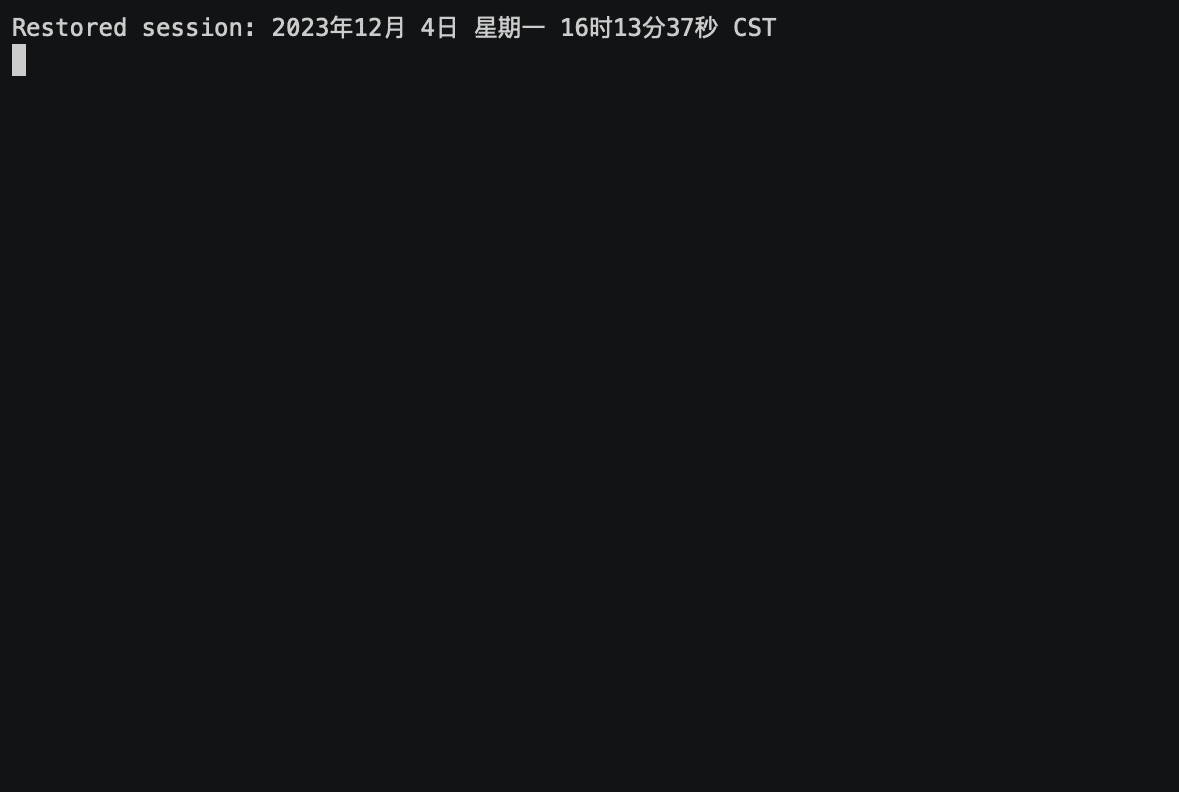组件开发
组件开发规范
通过Serverless Devs,可以被应用所引用,并按照用户的输入,执行预定的功能。例如某个应用中引用了FC组件,那么此时,用户可以通过传入Deploy命令进行函数的部署,而这里的FC组件,则是需要建立在组件模型基础之上,即要符合组件的开发规范;
快速开始
Serverless Devs的组件开发案例已经被集成到Serverless Devs命令行工具中,通过对Serverless Devs的命令行工具,可以进行空白组件项目的初始化,开发者只需要执行s init即可看到:

🚀 More applications: https://registry.serverless-devs.com
? Hello Serverless for Cloud Vendors (Use arrow keys or type to search)❯ Alibaba Cloud Serverless AWS Cloud Serverless Tencent Cloud Serverless Baidu Cloud Serverless Dev Template for Serverless Devs此时,选择最后的Dev Template for Serverless Devs,并按回车:
$ s init
🚀 More applications: https://registry.serverless-devs.com
? Hello Serverless for Cloud Vendors Dev Template for Serverless Devs? Please select an Serverless-Devs Application (Use arrow keys or type to search) Application Scaffolding❯ Component Scaffolding Plugin Scaffolding此时,选择Component Scaffolding,并按回车,即可完成一个完整的Serverless Devs的Component项目的初始化,可以通过命令查看文件树:
$ find . -print | sed -e 's;[^/]*/;|____;g;s;____|; |;g'.|____LICENSE|____.signore|____.prettierignore|____README.md|____publish.yaml|______tests__| |____mocks| | |____s.yaml| | |____code| | | |____index.js| |____index.test.ts| |____cli.test.ts|____.gitignore|____package-lock.json|____package.json|____.prettierrc.js|____tsconfig.json|____jest.config.ts|____src| |____commands-help| | |____remove.ts| | |____index.ts| | |____deploy.ts| | |____alias.ts| |____index.ts开发与调试
通过脚手架安装的目录中,能够在 {root}/__tests__/mocks 目录下模拟本地组件的使用与开发调试,该 s.yaml 通过 component: ${path('../..')} 引用 src 目录下的代码作为组件内容:
edition: 3.0.0name: hello-world-appaccess: "default"
vars: region: "cn-huhehaote"resources: hello_world: component: ${path('../..')} # 组件名称,Serverless Devs 工具本身类似于一种游戏机,不具备具体的业务能力,组件类似于游戏卡,用户通过向游戏机中插入不同的游戏卡实现不同的功能,即通过使用不同的组件实现不同的具体业务能力 props: region: ${vars.region} functionName: "start-nodejs-b97b" description: "hello world by serverless devs" runtime: "nodejs14" code: ./code handler: index.handler memorySize: 128 timeout: 60私有组件调试
工具外部组件
3.0.2及以上版本支持
示例 s.yaml 如下,其中
-
component 能够指定为一个 zip 包的外部链接,通过此方式获取的组件默认为 v3 版本,请使用 serverless-devs 3.0 描述文件规范进行编写 s.yaml 文件;可参考:描述文件规范
-
使用外部组件时,默认会将文件名称视为组件名,可通过 s component 查看详细信息;
-
使用外部组件时,工具的缓存与更新策略默认不对其生效;若本地需要同步外部组件的代码包内容,可手动清理缓存已获取最新组件:
s clean --component <component_name> # 清除指定组件缓存 -
外部组件会被 s 工具的 loadComponent 方法加载到内存中,核心方法为 buildComponentInstance,通过 require 加载,需要具备相关必要字段,详细见本文档。
edition: 3.0.0name: hello-world-appaccess: "test1"
vars: region: "cn-hangzhou"resources: hello_world: component: 'https://images.devsapp.cn/goat/fc3.zip' actions: pre-deploy: - run: 's clean --component v3/fc3' # 每次清除缓存获取最新组件 props: region: ${vars.region} functionName: "start-nodejs-4s87" description: 'hello world by serverless devs' runtime: "nodejs16" code: ./code handler: index.handler memorySize: 128 timeout: 30正式发布流程
开发者可以在 src 下完成应用的开发,并对项目进行publish.yaml文件的编写。完成之后,即可通过以下几个步骤发布项目:
-
更改
publish.yaml里的Version字段。确保版本号比现有最高版本号大 1,例如:1.0.0 -> 1.0.1。 -
检测确认组件接收的参数
Properties后,首次发布需要先登录s registry login。Terminal window s registry login根据提示进行操作即可。
-
后续直接执行
s registry publish即可进行发布
目录结构
Component Model,即组件模型,需要通过指定的文件进行模型的规范和定义的。在这里,推荐的组件模型目录结构为:
|- src # 目录名字可以变更| └── 代码目录|- package.json: 需要定义好main|- publish.yaml: 项目的资源描述|- readme.md: 项目简介|- version.md: 版本更新内容其中:
| 目录 | 必须 | 含义 |
|---|---|---|
| src | 推荐存在 | 统一放置功能实现,当然也可以换成其他的名称,或者平铺到项目下,但是推荐通过src来做统一的存放 |
| package.json | 必须存在 | Node.js的package.json,需要描述清楚组件的入口文件位置 |
| publish.yaml | 必须存在 | Serverless Devs Package的开发识别文档 |
| readme.md | 必须存在 | 对该组件的描述,或帮助文档信息 |
| version.md | 推荐存在 | 版本的描述,例如当前版本的更新内容等 |
组件模型元数据
组件模型元数据将会在publish.yaml中进行描述,并在Serverless Registry和Serverless Devs开发者工具侧进行识别和引用。
publish.yaml文件的基本格式如下所示:
Edition: 3.0.0Type: ComponentName: 名称Provider: - XXXXX # 取值内容参考:https://api.devsapp.cn/v3/common/args.htmlVersion: 版本,例如0.0.1Description: 简短的描述/介绍HomePage: 项目首页地址Tags: #标签详情 - 部署函数 - 部署组件Category: XXXXX # 取值内容参考:https://api.devsapp.cn/v3/common/args.htmlService: # 使用的服务 XXXXX: # 取值内容参考:https://api.devsapp.cn/v3/common/args.html Authorities: #权限描述 - XXXXX # 所需要的权限,例如AliyunFCFullAccessCommands: # 指令,格式为指令:指令描述,例如: deploy: 部署函数 invoke: 调用函数Organization: 组织名称Effective: 可视 / Public, Private,OrganizationParameters: type: object additionalProperties: false required: # 必填项 - region - service properties: region: # 枚举类型 default: cn-hangzhou title: 地域 # 名称 enum: # 枚举 - cn-beijing - cn-hangzhou参数详解
| 目录 | 必须 | 结构 | 含义 |
|---|---|---|---|
| Edition | 是 | String | 当前Yaml的版本,推荐3.0.0 |
| Type | 是 | String | 类型,包括Component和Project,Plugin三个取值,此处取值Component |
| Name | 是 | String | 组件名称 |
| Provider | 是 | List | 组件所支持的云厂商信息 |
| Version | 是 | String | 组件版本号,例如0.0.1 |
| Description | 是 | String | 组件描述(一句话的简短描述) |
| HomePage | 否 | String | 组件的主页,可以填写组件的仓库地址 |
| Tags | 否 | List | 组件的标签 |
| Category | 是 | String | 组件的分类 |
| Service | 是 | Struct | 组件所需要的服务和相关的权限等描述,例如该组件需要函数计算,Serverless工作流等产品/服务作为支持 |
| Organization | 是 | String | 组件的组织名称 |
| Effective | 是 | String | 组件的可视权限 |
| Properties | 是 | Struct | 组件的参数描述,组件的属性定义,严格遵守Json Schema规范标准 |
Provider
取值范围:阿里云, 百度智能云, 华为云, 腾讯云, AWS, Azure, Google Cloud, 其它
格式参考:
Provider: - 阿里云 - 百度智能云Version
通过不同格式的版本号,来进行开发,灰度,正式的版本划分。
x.x.x指正式版本,获取时会取最高版本号的对应内容。dev.x.x或dev指开发版本,可以通过拉版本列表获取,也可以通过指定对应版本获取,但是不会通过获取最新版本获取,例如最新版本是1.0.0,之后发布dev.1.1版本,此时获取最新版本依旧是1.0.0版本。beta.x.x#x指灰度版本,可以通过拉版本列表获取,也可以通过指定对应版本获取或拉最新版本获取,其中#后面是一个小于 10 大于 0 的正整数,用于表示当前版本的灰度百分比,例如beta.1.0#4,表示的是,用户在获取最新版本时,有40%概率获得到当前的beta版本。
格式参考:
Version: 1.0.0Version: dev.0.1Version: beta.1.0#4Effective
取值范围:Public,Private,Organization
Effective: Public根据Organization字段的有无(是否加入组织),此字段的作用范围也不一样。可概括如下:
| Effective/有无组织 | 有 | 无 |
|---|---|---|
| Public | 所有人可见 | 所有人可见 |
| Private | 只有自己可见 | 只有自己可见 |
| Organization | 组织内可见 | invalid |
Category
取值范围:基础云服务, Web框架, 全栈应用, 人工智能, 音视频处理, 图文处理, 监控告警, 大数据, IoT, 新手入门, 其它, 开源项目
格式参考:
Category: 基础云服务Service
取值范围:函数计算, 容器服务, 镜像服务, 消息队列, 工作流, CDN, 对象存储, 表格存储, MNS, 日志服务, API网关, 数据库, 解析服务, 云应用, 其它
格式参考:
Service: # 使用的服务 函数计算: Authorities: #权限描述 - AliyunFCFullAccess # 所需要的权限,例如AliyunFCFullAccessProperties
Properties参数的格式,严格遵循JSON Scheme的规范标准,具体格式,可以参考以下案例:
Properties: type: object additionalProperties: false required: # 必填项 - region - service properties: region: # 枚举类型 default: cn-hangzhou title: 地域 # 名称 enum: # 枚举 - cn-beijing - cn-hangzhou - cn-shanghai - cn-qingdao service: title: 服务配置 # 名称 type: object # 类型 properties: name: # 正则校验 title: 名称 description: 只能包含字母、数字、下划线和中划线。不能以数字、中划线开头。长度在 1-128 之间。 type: string pattern: '^[a-zA-Z0-9-_]{1,128}$' internetAccess: # boolean 值 title: 允许公网访问 description: 配置服务中的函数是否可以访问互联网 default: true type: boolean logConfig: # 复杂类型 title: 日志配置 oneOf: # 只能有一个生效 - title: 自动配置 enum: - auto - logConfig: type: object title: 日志配置 additionalProperties: true required: - project - logstore properties: project: type: string title: 日志项目 default: '' examples: - xx-project logstore: type: string title: 日志仓库 default: '' examples: - xx-logstore logBeginRule: title: 日志分割规则 default: None enum: - DefaultRegex - None enableRequestMetrics: type: boolean title: 请求级别指标 default: true # 默认值 enableInstanceMetrics: type: boolean title: 实例级别指标 default: false examples: - true代码规范
在组件模型中,代码组成规范有两个部分:
package.json中需要描述清楚入口文件所在地址;例如{"main": "./dist/index.js"};- 在代码中实现对应的用户方法。例如Package开发者希望用户可以通过deploy命令,进行项目的部署,那么就可以实现一个deploy的方法,并在方法内实现对应的部署能力;
关于代码规范部分,可以参考如下案例:
import * as commandsHelp from './commands-help';import { IInputs } from '@serverless-devs/component-interface';import { parseArgv } from '@serverless-devs/utils';
// 示例组件export default class StartComponent { private logger: any; public commands = {}; constructor({ logger = console }) { this.logger = logger; this.commands = commandsHelp; } // 基本示例 // 部署 public async deploy(inputs: IInputs) { this.logger.debug(`deploy inputs: ${JSON.stringify(inputs)}`); const argv = parseArgv(inputs.args); this.logger.debug(`y=${argv.y}`); const credential = await inputs.getCredential(); this.logger.debug(`credential: ${JSON.stringify(credential, null, 2)}`) this.logger.progress('this is a test message'); return { hello: 'world', message: 'this is a deploy function', y: argv.y }; }}其中入参inputs的结构为:
{ props: Record<string, any>; name: string; command: string; yaml: { path: string; }; resource: { name: string; component: string; access: string; }; getCredential: () => Promise<ICredentials | any>; args: []; cwd: string; outputs?: Record<string, any>;}| 目录 | 含义 |
|---|---|
| props | 用户配置的属性/参数 |
| name | 用户的项目名称 |
| command | 用户所执行的命令 |
| yaml | 用户的yaml配置文件路径 |
| resource | 用户的应用模块基本信息 |
| getCredential | 用户的密钥信息 |
| args | 用户传递的参数(解析后的,以数组形式传递) |
| cwd | 用户执行linux命令的当前路径 |
| outputs | 记录之前已执行完的模块输出结果 |
在上面的案例代码中,可以看到有一个deploy方法,该方法就是功能实现的方法。此时当用户使用deploy命令时,系统就会携带参数调用该方法。以一个真实案例作为举例说明:
该组件名为hexo,组件核心代码如上所示,具备一个test方法,此时用户侧的Yaml为:
edition: 3.0.0 # 命令行YAML规范版本,遵循语义化版本(Semantic Versioning)规范name: hello-world-app # 项目名称access: default # 秘钥别名
resources: HexoComponent: component: hexo props: region: 'cn-hangzhou' codeUri: './src' Hexo2Component: component: hexo props: region: 'cn-huhehaote' codeUri: './src'当用户执行s deploy --debug,此时,组件代码中的deploy方法,收到的inputs参数实际上是:
{ "cwd": "/Users/start-component-v3/__tests__/mocks", "name": "hello-world-app", "props": { "region": "cn-huhehaote", "code": "./code" }, "command": "deploy", "args": [ "--debug" ], "yaml": { "path": "/Users/start-component-v3/__tests__/mocks/s.yaml" }, "resource": { "name": "Hexo2Component", "component": "/Users/start-component-v3", "access": "default" }, "outputs": { "HexoComponent": { "hello": "world", "message": "this is a deploy function" } }}约定方法
在3.0版本中,cli工具的部分指令会调用组件的特定方法,以便实现对应的功能。因此,若你的组件需要实现对应的功能,那么需要在组件代码中实现对应名称的方法。目前约定的方法如下:
getSchema
在s verify指令中,cli工具会调用组件的getSchema方法,获取组件的属性定义,并进行校验。因此,若你的组件想要对Yaml中填写的props进行校验,则需要在代码中实现一个名称为getSchema方法。该方法的入参出参应如下:
| 入参 | 类型 | 含义 |
|---|---|---|
| - | - | - |
| 出参 | 类型 | 含义 |
|---|---|---|
| schema | string | 组件属性的JSON Schema。格式可参考JSON Schema官方网站 |
fc3组件实现案例:
public async getSchema(inputs: IInputs) { logger.debug(`getSchema: ${JSON.stringify(inputs)}`); return fs.readFileSync(SCHEMA_FILE_PATH, 'utf-8');}